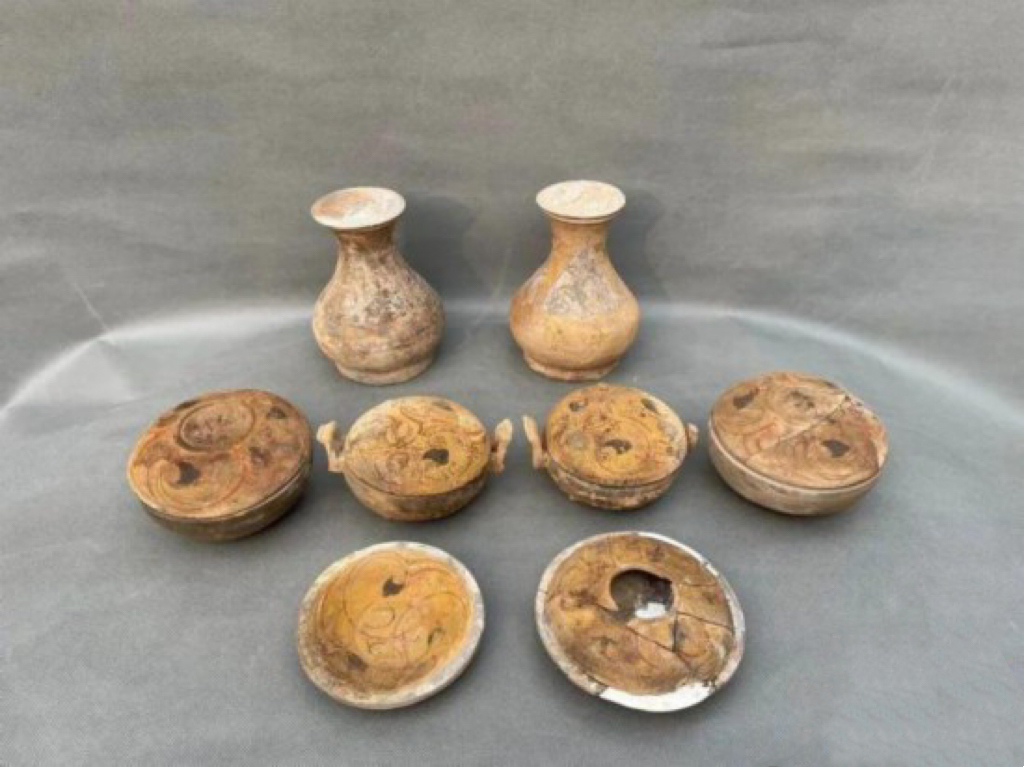The archaeological findings of 215 tombs dating from the Neolithic period to the Ming (1368-1644) and Qing (1644-1911) dynasties in Xiangfen County, Shanxi Province were unveiled by the Shanxi Provincial Institute of Archaeology on Monday.
They further support the theory that “Pingyang,” the area below Xiangfen County that is now known as Yaodou District, is the location of the birthplace and ancient capital of the legendary civilization founded by Yao, one of the Five Emperors in Chinese mythology.

An aerial view of the tombs unearthed in Xiangfen County, Shanxi Province, China. /Photo provided by Shanxi Provincial Institute of Archaeology
An aerial view of the tombs unearthed in Xiangfen County, Shanxi Province, China. /Photo provided by Shanxi Provincial Institute of Archaeology
From June 2020 to July 2022, a joint archaeological team conducted the excavations, and the excavation area was divided into two regions, east and west of the Fenhe River, where a total of 348 archaeological sites were cleared and 215 tombs unearthed.
The eastern region encompassed two villages, where 145 tombs were excavated. The accompanying burial items included 959 artifacts, comprising 222 bronze items, 21 iron items and 528 pottery items.
The western region encompassed three villages that contained a total of 69 tombs, along with 437 accompanying burial items. Another 196 ash pits, a house site, six stoves and two kiln sites were also unearthed.

A photo shows some pottery items unearthed in Xiangfen County, Shanxi Province, China. /Photo provided by Shanxi Provincial Institute of Archaeology
A photo shows some pottery items unearthed in Xiangfen County, Shanxi Province, China. /Photo provided by Shanxi Provincial Institute of Archaeology
Approximately 300 meters to the southeast of the excavation area lies the ancient city site of Guchengzhuang, a cultural heritage site in Xiangfen County where pottery bearing the inscription “Pingshi” was discovered. These works of pottery were confirmed as products created under the supervision of Pingyang County, thereby establishing it as the location of the ancient city during the late Warring States period (475-221BC) when the region was occupied by Qin forces. Its name was later changed to Xiangling County during the Western Han Dynasty (206BC-25 AD.)
Archaeologists believe that this region boasts a rich variety of archaeological remains spanning various eras, and that the Guchengzhuang City Site provides more archaeological evidence that the capital of the legendary civilization founded by Yao is, in fact, the location of Pingyang.